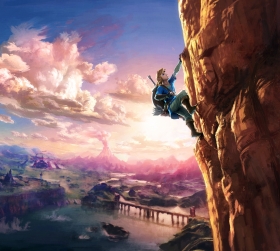
The Legend of Zelda: Breath of the Wild's Approach To Accessibility Is Still Unmatched
After playing it for over a hundred hours, few games have amazed me like The Legend of Zelda: Breath of the Wild. I've been thinking about how the developers created a game that’s still leading the way in terms of accessibility all these years later.
First of all, I want to make one thing clear. When most people, including myself, think about accessibility in videogames, we usually think of adjustable controllers, colourblindness settings, and disabling quick time events, among other things. Those are all well and good, but they fail to create a consistent experience and instead rely on secondary factors that ultimately fail to deliver what is really needed. Not that games shouldn’t have customisable options, and I do believe being able to tailor the game to your liking is a great feature. But sometimes, it can damage the overall experience, making players feel like they missed out on something. I think this is something Breath of the Wild gets right as it’s all about player freedom, so there isn’t a need for extraneous features.
Breath of the Wild is also in a league of its own in terms of minimising context sensitivity. I was playing Star Wars Jedi: Fallen Order the other day, and while it is a great game, many of its mechanics rely on the analogue stick being pressed to complete separate actions. So not only is it uncomfortable for the player to keep doing that every five seconds, it can also confuse them about each button’s purpose. In Breath of the Wild, the A button is context insensitive, so there is minimal overlap on what it can and can’t do. Plus, players can press a button to read signposts in an easily understandable format, and button prompts show the button’s location on the controller itself to prevent the fumbling of controls in the heat of the moment.

There is also the world's believability, such as fire acting like fire, the weather cycle, objects behaving realistically, and tons of other stuff that create a sense of realism without the need for fancy graphics. A believable world allows newcomers to approach the game with a base knowledge of how it works, increasing the possibility of experimentation.
Plus, even though they don’t need to contribute to that fantastic sense of realism, the stylised graphics are another great aspect because Breath of the Wild doesn’t have a convoluted art style, unlike other titles in the open-world genre. For example, PlayStation games have great visuals, but I often get confused about what I should be looking at. It doesn’t help that God of War Ragnarök’s characters won’t stop spoiling the mystery for you, which can be patronising for those experiencing it. If someone has trouble moving their hands because of a disability and they have to keep hearing Atreus say the same thing repeatedly, they might get frustrated and turn the game off because they’re being treated like they’re four years old.
But it’s really because the game didn’t do a good enough job of providing an accessible experience. Realistic graphics can also be challenging for those with visual impairments, so I’d like to see developers take the stylistic approach more often. I also believe trusting the player is crucial to game design, and Breath of the Wild does it exceptionally well. From the opening moments, the player understands everything they need to know so they can work on getting better and eventually beat the final boss. And the simplistic controls do a great job of being understandable without skimping out on the necessary actions. Having a simple control scheme and a believable world allows your game to be approachable to many people. It’s also not in your face about any of this stuff, which is another significant accomplishment by the developers. I guess you could argue the difficulty is holding it back in this regard but do we really want every developer to be terrified of letting us fail? If anything, failing in Breath of the Wild could lead to someone with a disability getting a sense of accomplishment after overcoming a challenge which could, in turn, affect how they see their lives. So yeah, that’s special.

Breath of the Wild’s context insensitivity, clear visual style, and lack of patronising characters make for an unrivalled experience that I cannot recommend enough. By limiting outside factors, developers can create a game that will lead the way in terms of accessibility — just like Zelda did all the way back in 2017. And I hope this will show companies like PlayStation and Xbox how they should handle accessibility in their games going forward.









COMMENTS